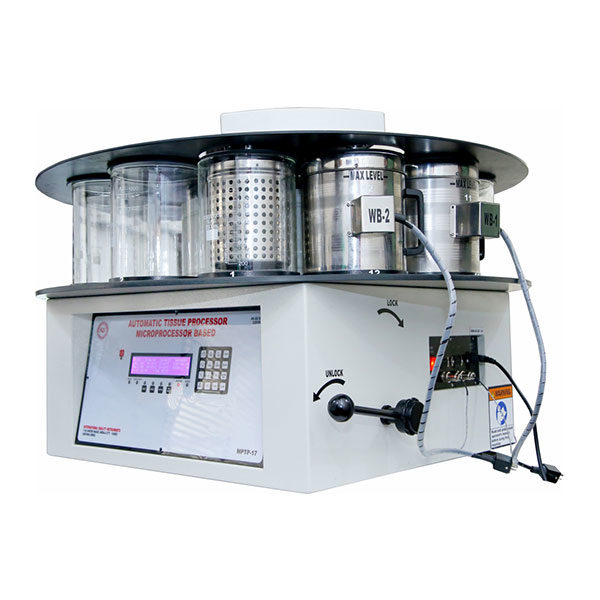The Importance of Pathology Instruments and their Integration with Future
 |
| Importance of Pathology Instruments Credits: Charles River Labs. |
In this article, we will delve into the importance of pathology instruments and their role in the future of medicine. We will explore the different types of pathology instruments and the advancements made in the field.
The use of pathology instruments has been critical in advancing medical research and treatment. With the help of these instruments, pathologists are able to study diseases in detail and determine the best course of treatment for the patient. The ability to accurately diagnose medical conditions has led to a better understanding of the human body and the development of new treatments and therapies.
Types of Pathology Instruments
There are many different types of pathology instruments that are used in the field of pathology. Some of the most common instruments include:
Microscopes
 |
| Credits 360DX |
Microscopes are one of the most important pathology instruments and are used to examine tissue samples in detail. They allow pathologists to view samples at high magnifications, making it easier to identify diseases and other medical conditions.
Tissue processors
 |
Automatic Tissue processors Credits: IQI |
Tissue processors are used to prepare tissue samples for examination. They are used to embed the samples in paraffin and prepare them for staining. This process helps pathologists to view the samples in greater detail, making it easier to diagnose medical conditions.
Centrifuges
Centrifuges are used to separate different components of a tissue sample, making it easier for pathologists to study the sample. They are commonly used to separate blood cells from plasma, making it easier to study the blood cells in detail.
Automated slide staining systems
 | |||
| Automated slide staining systems Credits: Especialidades Médicas Myr, SL |
Automated slide staining systems are used to prepare tissue samples for examination. They are used to apply stains to the tissue samples, making it easier for pathologists to view the samples in detail.
Advancements in the Field of Pathology Instruments
Over the years, there have been many advancements in the field of pathology instruments. These advancements have made it easier for pathologists to study diseases and diagnose medical conditions accurately.
One of the biggest advancements in the field has been the development of digital pathology. This technology allows pathologists to view tissue samples on a computer screen, making it easier to diagnose medical conditions. The use of digital pathology has also made it easier to share tissue samples with other medical professionals, making it easier to collaborate on diagnoses and treatments.
Another advancement in the field has been the development of automation in pathology. Automated slide staining systems and tissue processors have made it easier for pathologists to prepare tissue samples for examination. This has reduced the time it takes to prepare tissue samples, making it easier for pathologists to diagnose medical conditions.
In conclusion, pathology instruments play a critical role in the diagnosis and treatment of medical conditions. With the help of these instruments, pathologists are able to study diseases in detail and determine the important factors related to any medical analysis
What is a digital pathology system?
Role of AI in Pathology Instruments
The use of AI in Pathology Instruments| Credits: Specialist Direct |
Artificial intelligence (AI) has the potential to revolutionize the field of pathology by transforming the way pathologists diagnose and treat diseases. The role of AI in pathology instruments can be classified into two main categories: image analysis and diagnostic support.
Image Analysis
AI can assist pathologists in analyzing and interpreting complex medical images, such as those generated by digital pathology systems, microscopy, and radiology. AI algorithms can help identify and highlight relevant structures and features within images, reducing the time and effort required for manual inspection. Additionally, AI algorithms can be used to automate the annotation and quantification of image features, enabling pathologists to make more accurate and consistent diagnoses.
Diagnostic Support
AI can also provide diagnostic support to pathologists by using machine learning algorithms to analyze vast amounts of medical data and provide predictions about the likelihood of a disease. For example, AI algorithms can analyze patient demographic information, laboratory test results, and medical images to predict the presence and stage of a disease. AI algorithms can also be used to predict treatment response and help identify patients who are at high risk for certain conditions.
The role of AI in pathology instruments is rapidly expanding, and it has the potential to significantly improve the accuracy and efficiency of the pathology process. However, it is important to note that AI should not be used in isolation, but instead, it should be seen as a tool to support and enhance the expertise of pathologists.
List of some major pathology instruments manufacturers
- Leica Biosystems - a German company that produces a wide range of histology and cytology instruments and reagents.
- Thermo Fisher Scientific - an American company that offers a broad range of instruments and reagents for the pathology laboratory, including tissue processors, embedding centers, microtomes, and stainers.
- Sakura Finetek - a Japanese company that produces a variety of instruments for histology and pathology, including tissue processors, embedding centers, and microtomes.
- Ventana Medical Systems - an American company that specializes in automated tissue staining systems for use in pathology laboratories.
- Agilent Technologies - an American company that offers a range of instruments for the pathology laboratory, including tissue microarray systems, tissue processors, and slide scanners.
- F. Hoffmann-La Roche Ltd. - a Swiss company that produces a wide range of instruments and reagents for the pathology laboratory, including tissue processors, embedding centers, and staining systems.






No comments:
Post a Comment